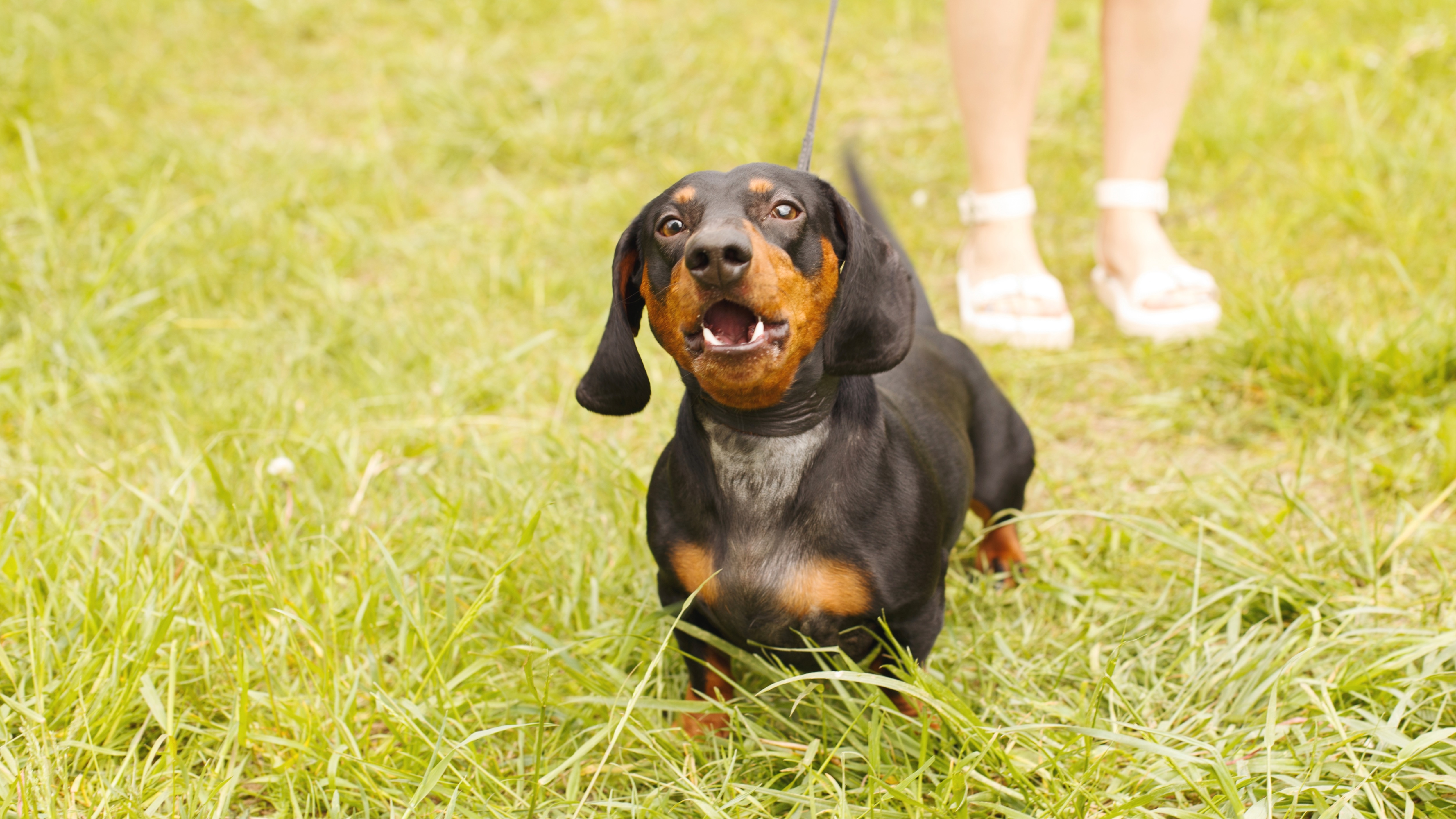Canine expert shares five tips all reactive dog owners need to know — and number three has really got us thinking!
Exhausted by your dog's reactive behavior? This trainer's simple tips are well worth trying.

When it comes to the most challenging parts of being a dog owner, there's no denying that dealing with reactive behavior in dogs is at the top of the list.
Whether it's excessive barking, lunging, or even aggression, reactivity can leave you feeling frustrated, exhausted and trapped in your own home.
Many of us rely on the best dog treats to try to change our dog's behavior, and while these can certainly be an effective tool for rewarding your canine when they do something positive, treats alone aren't enough to overcome reactivity.
What causes reactivity in dogs is complex and how to calm a reactive dog requires a multi-faceted approach.
With that in mind, expert trainer and behaviorist Renee Rhoades has shared a helpful video on Instagram in which she reveals five simple things we can do to help lessen our dog's over-reaction to common stimuli in their environment.
A post shared by Renee Rhoades, Qualified Canine Behaviorist (@r.plus.dogs)
A photo posted by on
1. Practice management cues: There are so many different management cues you can practice with your reactive dog. In her video, Rhoades can be seen stepping on her dog's long line when he starts to become overly focused on other dogs who are running around in the distance. A management cue is anything your dog can perceive — it could be something they can see, feel, hear, smell, touch or taste. The cue itself is not important, what is important is that you practice it regularly and your dog is responsive to it.
2. Pick open spaces: "Environments where you have the most visibility work well for proactively managing your dog and your movements," says Rhoades. A quiet park, field, or stretch of beach are all great choices when you're working on your dog's reactivity.
Get the best advice, tips and top tech for your beloved Pets
3. Reward shake-offs: If you've had your canine companion for any length of time you've probably noticed them shaking on more than one occasion, and it turns out this behavior isn't just something dogs do when they're wet. "Shake-off's are a dog's "reset button", used to release tension - rewarding these can increase a dog's ability to self regulate stress," explains Rhoades.
4. Keep food close at hand: When training your reactive dog, make sure you have plenty of high-value food in your pocket. "This is always a plus especially in the early stages when we need to build up strong positive associations - or avoid further negative ones!," says Rhoades.
5. Let your dog sniff: "While we may encounter triggers on our walk, the main purpose is to allow your dog to engage with the environment around them, specifically working that nose!," Rhoades explains. If you want to learn more about the many benefits of sniffing, 'I tried a 45-minute 'sniffari', and it tired out my border collie more than a two-hour hike' is well worth checking out!
Dealing with reactivity takes time, patience and consistency, and you don't need to go it alone. If you feel you and your dog would benefit from some extra support, we highly recommend reaching out to a professional trainer.
Check out our guide on how to spot dog trainer red flags to ensure you're working with someone who's suitably qualified and uses positive training methods.
American Journey Peanut Butter Recipe Grain-Free Oven Baked Crunchy Biscuit Dog Treats
$4.19 at Chewy
These grain-free, crunchy snacks are sure to please your pup. Small in size and packed full of flavour, they're made with wholesome ingredients that will keep your dog motivated and energized.

Kathryn is a freelance writer who has been a member of the PetsRadar family since it launched in 2020. Highly experienced in her field, she's driven by a desire to provide pet parents with accurate, timely, and informative content that enables them to provide their fur friends with everything they need to thrive.
Kathryn works closely with vets and trainers to ensure all articles offer the most up-to-date information across a range of pet-related fields, from insights into health and behavior issues to tips on products and training.
When she’s not busy crafting the perfect sentence for her features, buying guides and news pieces, she can be found hanging out with her family (which includes one super sassy cat and a kitten), drinking copious amounts of Jasmine tea and reading all the books.
She has written for a range of publications, including Fit&Well, Top Ten Reviews, LiveScience, Goodto, and Product Hunt.

